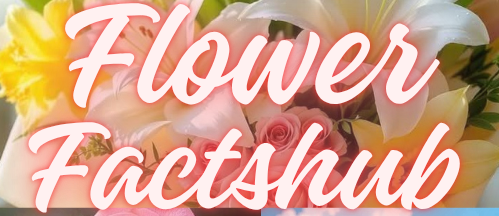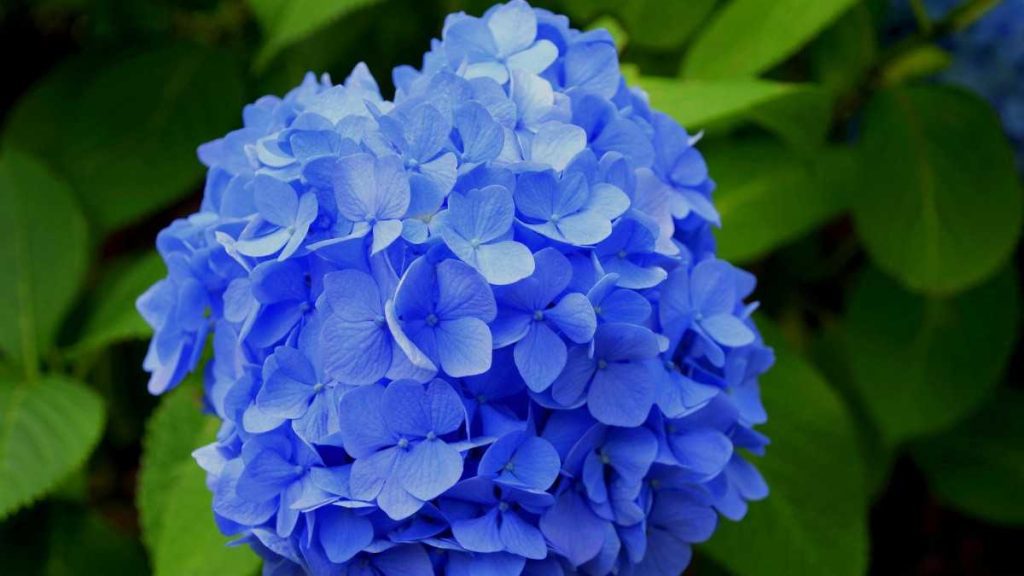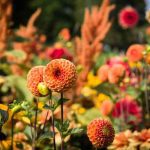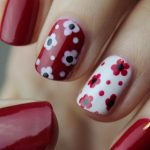I still remember standing in front of Vincent Van Gogh’s famous painting Irises (1889), feeling like the Dutch painter had unlocked a Mother Nature secret. His artist eye seemed to understand how plant pigments can reflect light to create the illusion of a true blend of blue that feels almost natural under perfect lighting. That same wonder inspires my own gardening a world where less than 10% of the flowering plant kingdom offers blue blooms, yet the beauty of this elite color group makes every effort worthwhile. When I plan carefully, my garden keeps singing the blues from early spring to late fall, showing off shades that range from the softest sky blue to deep indigo, whether in low groundcovers or large shrubs with unique growth habits.
Travel and research back this passion. A survey by YouGov offices around the world revealed blue as the most popular colour across ten countries on four continents, loved for its cool, refreshing hue. It’s no surprising fact people love blue flowers for their calmness, the way they look relaxing and serene, and how a hydrangea or other Australian blooms can turn a home garden into a beautiful botanical picture. Whether planting a myriad of colors to create a compliment to any landscaped area, or seeking the rarer blue color for tranquility, peace, and serenity, I’ve learned through the science of flower breeding that more blue flowers are becoming available every year. Their hues, from softest sky blues to the deepest indigos, capture attention and add an extra vibrant touch.
Why Blue Flowers Are So Rare?
When I first learned about the science behind blue flowers, it amazed me. Most plants simply lack the right pigments to produce a strong blue hue. Instead, a complex chemical dance creates the effect we see, mixing red and violet tones to form that striking illusion of blue. It’s a fascinating example of how nature works quietly to craft something extraordinary. The rarity of these flowers explains why gardeners treasure every bloom. Through careful breeding, horticulturists continue unlocking that secret, expanding our options and making once-rare shades more accessible to everyone who loves this captivating color.
World Love for the Color Blue
A global survey conducted by YouGov offices around the world revealed that blue is the most popular colour across ten countries on four continents. This comes as no surprise to me; the cool, refreshing hue of blue is universally well-loved. Whenever I walk through gardens bursting with blue flowers, I feel a deep calmness and a sense of serenity that no other color delivers. Even a single hydrangea in bloom can transform a space and prove that what’s rare in nature can still become a common delight in human hearts. Friends often tell me how relaxing it is to simply look at these blooms, and I see their eyes brighten with that same admiration that Van Gogh must have felt.
Magical Varieties of Rare Blue Flowers
Over the years, I’ve planted and admired countless blue flowers each with its own character. In my garden, I’ve experimented with Australian blooms like blue pincushions and native dampiera, alongside classics such as Himalayan blue poppies, delphiniums, and bluebells. These different types of blue flowers range from the softest sky blues to the deepest indigos, each one capturing attention with striking hues that stand out against lush greenery. Whether you’re a seasoned gardening enthusiast or someone just searching for the perfect bouquet, you’ll find inspiration in guides that introduce different types of rare blue flowers and even a comprehensive list of 15 popular varieties. My personal favorites vary in shape, size, and shade, giving me endless variety to choose from and adding an extra pop of color to my home garden.
15 Stunning Blue Flowers to Brighten Your Space
Below is a deeper look at fifteen exceptional blue flowers. Each entry includes quick facts on ideal growing zones, sunlight, watering needs, and fun botanical notes to help you plan the perfect garden.
1. Hydrangea (Hydrangea macrophylla)
- Color Notes: Shades range from powdery sky blue to rich sapphire, depending on soil pH. Acidic soil (pH below 6.0) creates the most intense blue.
- Growing Zones: USDA 5–9.
- Care Tips: Prefers partial shade and consistently moist, well-drained soil. Mulch heavily to retain moisture.
- Fun Fact: The name “hydrangea” comes from Greek words meaning “water vessel,” reflecting the plant’s need for steady hydration.
2. Blue Delphinium (Delphinium elatum hybrids)
- Color Notes: Tall spikes of cobalt or electric blue flowers.
- Growing Zones: USDA 3–7.
- Care Tips: Plant in full sun with rich, well-draining soil. Stake tall stems to protect them from wind. Cut back after the first bloom for a second flush.
- Fun Fact: Symbolizes cheerfulness and goodwill, making it popular in wedding arrangements.
3. English Bluebell (Hyacinthoides non-scripta)
- Color Notes: Graceful, nodding bells of deep violet-blue with a sweet, honey-like fragrance.
- Growing Zones: USDA 4–9.
- Care Tips: Thrives in woodland gardens with partial to full shade and moist, humus-rich soil. Allow foliage to die back naturally after flowering.
- Fun Fact: Protected in the UK; it’s illegal to dig them up in the wild.
4. Himalayan Blue Poppy (Meconopsis betonicifolia)
- Color Notes: Silky, sky-blue petals with bright yellow stamens.
- Growing Zones: USDA 5–7.
- Care Tips: Loves cool, damp climates and partial shade. Needs consistently moist soil rich in organic matter.
- Fun Fact: Native to the mountains of Tibet and Bhutan, it’s often called the “Holy Grail of Gardeners” for its rare true-blue color.
5. Cornflower / Bachelor’s Button (Centaurea cyanus)
- Color Notes: Brilliant royal blue blooms that last from spring through early summer.
- Growing Zones: USDA 2–11 (annual).
- Care Tips: Prefers full sun and average, well-drained soil. Drought-tolerant once established.
- Fun Fact: An ancient symbol of love and fidelity; historically worn by young men in love.
6. Morning Glory (Ipomoea tricolor)
- Color Notes: Trumpet-shaped flowers in shades of azure and sky blue, opening each morning and closing by afternoon.
- Growing Zones: USDA 3–10 (annual).
- Care Tips: Provide full sun and a sturdy trellis or fence for climbing vines. Soak seeds overnight before planting for quicker germination.
- Fun Fact: Known to attract hummingbirds and butterflies.
7. Grape Hyacinth (Muscari armeniacum)
- Color Notes: Tiny, urn-shaped flowers in clusters that resemble bunches of grapes.
- Growing Zones: USDA 4–8.
- Care Tips: Plant bulbs in fall in full sun to partial shade. Tolerates a wide range of soils.
- Fun Fact: Despite the name, these aren’t true hyacinths but belong to a different genus.
8. Blue Anemone (Anemone blanda)
- Color Notes: Daisy-like blooms in soft periwinkle blue.
- Growing Zones: USDA 5–9.
- Care Tips: Prefers partial shade and well-drained soil. Plant tubers in fall and soak them overnight before planting.
- Fun Fact: In Greek mythology, the anemone sprang from the tears of Aphrodite.
9. Forget-Me-Not (Myosotis sylvatica)
- Color Notes: Tiny sky-blue blossoms with sunny yellow centers.
- Growing Zones: USDA 3–8.
- Care Tips: Thrives in moist, shady spots and reseeds easily, creating natural carpets of blue each spring.
- Fun Fact: Associated with enduring love and remembrance, making it a favorite for memorial gardens.
10. Plumbago (Plumbago auriculata)
- Color Notes: Clusters of pale blue, star-shaped flowers that bloom from summer through fall.
- Growing Zones: USDA 9–11.
- Care Tips: Loves full sun and well-drained soil. Can be trained as a shrub, vine, or ground cover.
- Fun Fact: Also called “sky flower” because of its dreamy pastel shade.
11. Clematis (Clematis ‘Ramona’ and other blue cultivars)
- Color Notes: Starry flowers ranging from soft powder blue to rich violet-blue.
- Growing Zones: USDA 4–9.
- Care Tips: “Head in the sun, feet in the shade”—plant roots in cool, shaded soil while allowing the vines to climb toward full sun.
- Fun Fact: Different pruning groups require specific trimming times, so check your variety before cutting back.
12. Balloon Flower (Platycodon grandiflorus)
- Color Notes: Buds swell like balloons before bursting into vivid, star-shaped blue blossoms.
- Growing Zones: USDA 3–8.
- Care Tips: Prefers full sun to partial shade and well-drained soil. Once established, it’s drought-tolerant and long-lived.
- Fun Fact: In Korean folklore, balloon flowers symbolize endless love.
13. Agapanthus (Agapanthus africanus)
- Color Notes: Globe-shaped clusters of lavender-blue blooms on tall, elegant stalks.
- Growing Zones: USDA 8–11.
- Care Tips: Plant in full sun and well-drained soil. Drought-tolerant once mature, but more blooms appear with regular watering.
- Fun Fact: Sometimes called the “Lily of the Nile,” though it’s native to South Africa.
14. Lobelia (Lobelia erinus)
- Color Notes: Intense sapphire blue flowers that cascade beautifully from baskets and window boxes.
- Growing Zones: USDA 2–10 (annual).
- Care Tips: Requires moist soil and partial to full sun. Pinch back spent blooms to encourage continuous flowering.
- Fun Fact: A magnet for hummingbirds, adding lively movement to your garden.
15. Salvia (Salvia farinacea and S. patens)
- Color Notes: Spikes of deep indigo or vibrant true blue that last from late spring through frost.
- Growing Zones: USDA 4–10, depending on variety.
- Care Tips: Loves full sun and well-drained soil. Deadhead spent spikes to prolong the bloom period.
- Fun Fact: Highly aromatic foliage deters deer and rabbits, making it perfect for wildlife-friendly gardens.
Designing a Blue-Themed Garden
Creating a beautiful botanical picture with blue flowers starts with thoughtful planting. I like to mix a myriad of colors so the blues compliment the rest of the landscape while still taking center stage. For example, pairing soft sky blues with white roses enhances the feeling of peace and tranquility, while deep indigo blossoms provide a dramatic contrast to bright yellows or pinks. Flower breeding has given us more choices than ever, so it’s easier now to fill a landscaped area with blooms that were once harder to find. By staggering bloom times and considering growth habits, you can enjoy a wave of color from early spring right through late fall, ensuring your garden is always alive with blue flowers.
Care and Maintenance Tips
Caring for these rare beauties requires a bit of know-how. First, pay attention to soil pH and sunlight to maintain those coveted shades, because even the most resilient plants need the right environment. Regular pruning and strategic watering help keep blooms vibrant. I’ve learned through trial and error that some blue species thrive best when given partial shade during the hottest part of the day, while others love full sun. With patience and planning, you can keep your garden vibrant and peaceful, ensuring every season offers a fresh display of blue flowers that are as unique, vibrant, and great as the first day they opened.
Tips for Growing Blue Flowers Successfully
- Check Soil pH: Some species, like hydrangeas, change color depending on soil acidity.
- Provide Adequate Sunlight: While many blue flowers enjoy full sun, a few—like bluebells prefer partial shade.
- Water Wisely: Keep soil consistently moist but not soggy to prevent root rot.
- Plan for Pollinators: Blue flowers attract bees and butterflies, enhancing your garden’s ecosystem.
Creative Ways to Use Blue Flowers
- Garden Borders: Use blue blossoms to create cool-toned edges along pathways or beds.
- Bouquets & Centerpieces: Their calming color pairs beautifully with whites, pinks, or yellows.
- Themed Gardens: Design a monochromatic blue garden for a striking and serene visual impact.
Final Thoughts
Blue flowers may be rare, but they reward gardeners with unmatched elegance and serenity. Whether you choose classic hydrangeas, dramatic delphiniums, or delicate forget-me-nots, these blooms bring a refreshing sense of peace to any landscape. With proper care and thoughtful placement, your garden can become a calming oasis filled with nature’s most soothing color.
Blue flowers have an almost magical ability to draw the eye and calm the mind. Their cool, refreshing hues from delicate sky tones to deep indigos stand out beautifully against lush greenery. Yet, true-blue flowers are rare in nature, making them especially desirable for gardeners and flower enthusiasts.
Thanks to modern plant breeding, we now have a dazzling variety of blue blooms to choose from. Whether you’re designing a serene backyard retreat or searching for an unforgettable bouquet, these blue beauties can transform any space into a peaceful sanctuary.
Frequently Asked Questions (FAQs)
Q1: Are true blue flowers common in nature?
No, true blue pigments are rare in plants. Many blue flowers achieve their color through a mix of plant compounds and pH levels rather than a naturally blue pigment.
Q2: Can I change a flower’s color to blue?
For some plants, like hydrangeas, adjusting the soil pH (making it more acidic) can shift pink blooms toward blue.
Q3: Which blue flowers are easiest for beginners?
Cornflowers, lobelias, and forget-me-nots are beginner-friendly and require minimal maintenance.
Q4: Do blue flowers attract pollinators?
Yes! Bees, butterflies, and other beneficial insects are drawn to blue blossoms, helping pollinate your garden.
Q5: Can blue flowers grow in pots or containers?
Absolutely. Many species, such as lobelia, salvia, and morning glory, thrive in containers with proper sunlight and watering.



